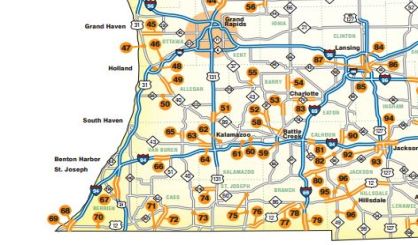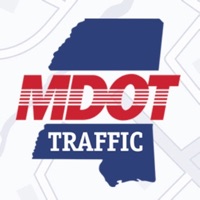

In response to this risk, MDOT is investigating whether the best option is to modify the current ATMS software or procure a new software solution that is specific to an ATM system. As such, there are cost implications that may exceed budgeted funds.

In order for the current ATMS software to manage an ATM system, additional development and algorithms are necessary. The ATMS currently issues response plans that respond to various planned/unplanned events. The current ATMS software was not designed to operate some of the identified ATM components or manage response plans that include some of those components. The ATM software solution will be critical to the safe and successful operations of the system.Ĭurrently, MDOT has a statewide ATMS software solution that manages all of the devices throughout the state. Only a portion of this can be handled by the current Advanced Transportation Management System (ATMS) software. The operation of the ATM system will require a software solution that not only controls the existing and new device types, but also can receive and process traffic data and execute complex response plans along the corridor. The proposed ATM project includes the implementation of closed-circuit television (CCTV) cameras, dynamic message signs (DMS), microwave vehicle detection systems (MVDS), lane control signs (LCS), and variable speed advisory (VSA) signs. During these meetings and workshops, specific conversations were focused on the software functionality necessary to operate the ATM system. During the project development, several stakeholder meetings and workshops were conducted to establish the Concept of Operations and solicit design direction. The section also plays a pivotal role in helping to meet the data collection and reporting required by the FHWA’s Highway Performance Monitoring System (HPMS) on all federal-aid roads.The Michigan Department of Transportation (MDOT) is considering an active traffic management (ATM) solution along the US-23 corridor from the western US-23/M-14 tri-level interchange to just south of M-36 (9 Mile Road), north of Ann Arbor. The data is also used to drive decisions being made by other MDOT divisions, Michigan State Police, the Transportation Asset Management Council, and local agencies. The data collected is provided to the Federal Highway Administration (FHWA) on a monthly and annual basis. Traffic data collection consists of short-term counts/studies, year-round data from the continuous count sites, and special studies. MS2’s NMDS allows state and local planners to analyze daily, monthly and annual non-motorized volumes as well as identify the highest bicycle and pedestrian ADTs along trails, roads and sidewalks.įrom MDOT’s announcement: “The Data Collection and Reporting Section at MDOT collects, analyzes, summarizes, reports, and retains detailed traffic data and travel information for 36,000 miles of federal-aid roads in Michigan, with additional reporting requirements for the 83,000 miles of local roads. Walking and the use of bicycles have increased in the state of Michigan. We have also integrated our software with ESRI’s Roads and Highways software which will enable MDOT to manage geometric and volume changes along road segments throughout the state. The HPMS module will assist MDOT in reporting traffic data to the Federal Highway Administration. The MDOT TDMS will be one of the most complete datasets of any of our users. Some of the modules within TDMS include: Traffic Count, Turning Movement Count, Non-Motorized, Highway Performance and Traffic Crash. TDMS is a software solution developed by MS2 that offers a variety of modules to receive, process and analyze traffic related data. The Michigan Department of Transportation (MDOT) today publicly rolled out its new Transportation Data Management System (TDMS).


 0 kommentar(er)
0 kommentar(er)
